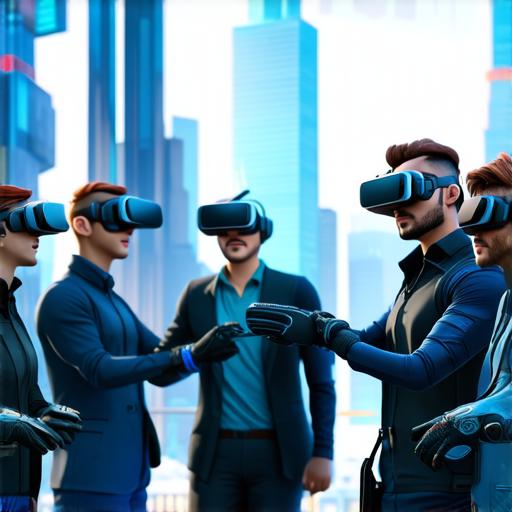<!DOCTYPE html>

What is Virtual Reality?
Virtual reality (VR) is a rapidly growing technology that offers a unique and immersive experience for users. In recent years, we have seen the rise of VR devices like the Oculus Rift, HTC Vive, and Samsung Gear VR.
This has led to an increase in demand for VR apps across various industries such as gaming, education, healthcare, and tourism.
Why Develop Virtual Reality Apps?
There are several reasons why you should consider developing VR apps. Firstly, the demand for VR apps is growing rapidly. As more people become aware of the technology and its potential applications, we can expect to see even more VR apps being developed in the future.
Secondly, VR offers a unique and engaging experience for users. By creating a virtual world that users can interact with in real-time, you can create an experience that is both immersive and memorable.
Thirdly, VR apps have the potential to revolutionize various industries such as gaming, healthcare, and tourism.
Getting Started with Virtual Reality Development
Before you start developing your VR app, it’s important to understand the basics of VR development. Here are some key concepts that you should be familiar with:
- 3D modeling: To create a virtual environment, you need to create 3D models of objects and environments. There are several software tools available for 3D modeling such as Blender, Maya, and SketchUp.
- Texturing and lighting: Once you have created your 3D models, you need to add textures and lighting to make them look realistic. Texturing involves adding colors and patterns to the surface of the objects, while lighting involves simulating the light sources in the virtual environment.
- Scripting: VR apps require scripting to control the behavior of the objects in the virtual environment. There are several scripting languages available for VR development such as C and JavaScript.
- Integration: Once you have created your 3D models, added textures and lighting, and written your scripts, you need to integrate all these elements into a single VR app. This requires knowledge of programming and software development tools such as Unity and Unreal Engine.
Best Practices for Creating Engaging Virtual Reality Experiences
Now that you have a basic understanding of VR development, let’s look at some best practices for creating engaging VR experiences.
- Keep it simple: VR can be overwhelming for users, especially if they are new to the technology. It’s important to keep your VR app simple and easy to use. Avoid cluttering the virtual environment with too many objects or features.
